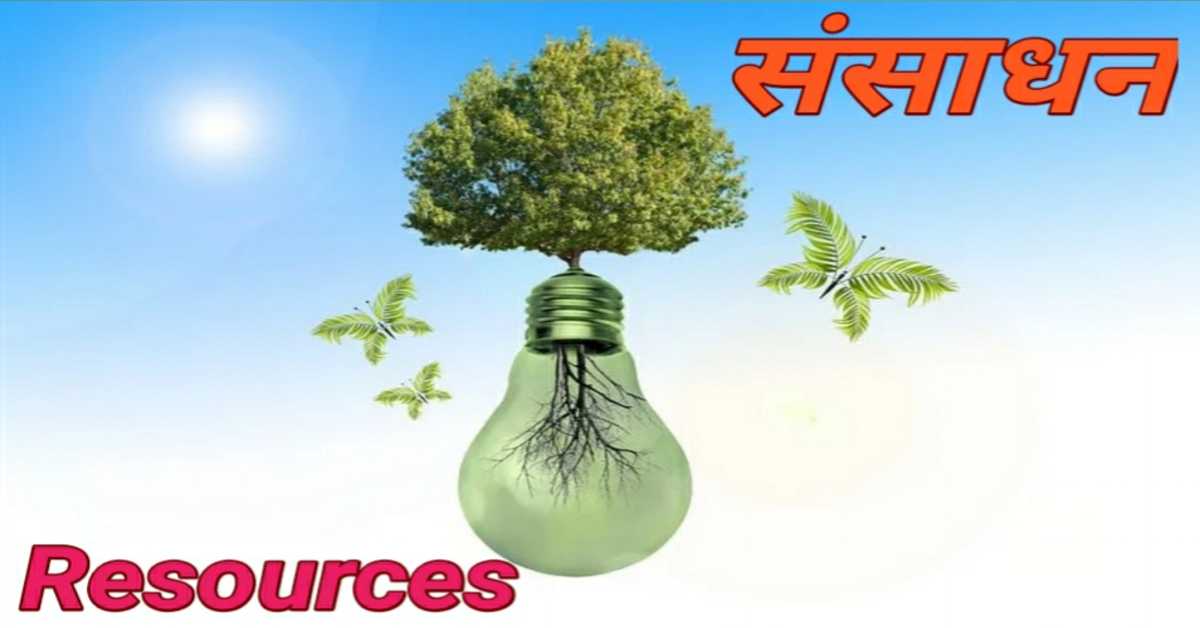
संसाधन किसे कहते हैं? | संसाधनों के प्रकार || Who Are The Resources?
संसाधन की परिभाषा (Resource Definition)
हमारे पर्यावरण में बहुत सी उपयोगी वस्तुएँ उपलब्ध हैं। इन वस्तुओं के द्वारा ही हम अपनी आवश्यकताओं को पूरा कर सकते हैं। कुछ उपयोगी वस्तुओं को बनाने के लिए प्रौद्योगिकी का भी प्रयोग किया जाता है। पर्यावरण में उपस्थित जो वस्तुएँ हमारे लिये उपयोगी हैं, 'संसाधन' कहलाती हैं।
There are many useful things available in our environment. It is only through these things that we can fulfill our needs. Technology is also used to make some useful items. The things present in the environment which are useful to us are called 'resources'.
भूगोल के इन 👇 प्रकरणों को भी पढ़ें। (Also read these 👇 episodes of Geography.)
भारत में मैंग्रोव वन | Mangrove Forest In India
संसाधन आर्थिक रूप से संभाव्य माने जाते हैं। साथ ही ये सांस्कृतिक रूप से मान्य होते हैं। पर्यावरण में उपलब्ध वस्तुओं को प्रकृति, प्रौद्योगिकी व संस्थाओं के परस्पर अंतर्संबंध के द्वारा रूपांतरित किया जाता है। फलस्वरूप उपयोगी संसाधन प्राप्त होते हैं। इसके बाद इनका प्रयोग किया जाता है।
Resources are considered economically feasible. Also they are culturally valid. The things available in the environment are transformed through the interrelationship of nature, technology and institutions. As a result, useful resources are obtained. After this they are used.
भूगोल के इन 👇 प्रकरणों को भी पढ़ें। (Also read these 👇 episodes of Geography.)
पर्वतीय क्षेत्रों के वृक्ष शंकुधारी क्यों होते हैं? | पर्वतीय वन || Mountain Forests
मानव प्रौद्योगिकी के द्वारा प्रकृति की अनेक वस्तुओं में बदलाव करते हैं और उनका प्रयोग करते हैं। ये वस्तुएँ आर्थिक दृष्टि से भी महत्वपूर्ण होती हैं। इनसे आर्थिक गतिविधियों का विकास होता है। फलस्वरुप समाज के विकास की गति तीव्र हो जाती है। अतः स्पष्ट है कि संसाधन हमारे लिए बहुत आवश्यक होते हैं। भौतिक पर्यावरण (प्रकृति), प्रौद्योगिकी और संस्थाएँ ये तीनों ही मानव से अंतर्संबंधित होते हैं। इन तीनों के द्वारा ही संसाधनों को प्राप्त किया जाता है। संसाधन मानवीय क्रियाओं का परिणाम है। मानव स्वयं संसाधनों का एक महत्वपूर्ण हिस्सा है। मानव, पर्यावरण में उपस्थित अनेक पदार्थों को संसाधनों में बदल देते हैं। इसके बाद इनका प्रयोग किया जाता है।
Humans modify and use many things of nature through technology. These items are also important from an economic point of view. These lead to the development of economic activities. As a result, the pace of development of the society gets accelerated. So it is clear that resources are very important for us. The physical environment (nature), technology and institutions are all interrelated with human beings. Resources are obtained only through these three. Resources are the result of human actions. Human beings themselves are an important part of the resources. Humans convert many substances present in the environment into resources. After this they are used.
भूगोल के इन 👇 प्रकरणों को भी पढ़ें। (Also read these 👇 episodes of Geography.)
नागफनी की पत्तियाँ छोटी और काटेदार क्यों होती हैं? | भारत में कटीले वन एवं झाड़ियाँ | Information About Thorny Forests
संसाधनों के प्रकार (Types Of Resources)
उत्पत्ति के आधार पर– इस आधार पर संसाधनों को दो भागों में वर्गीकृत किया जा सकता है–
1. जैव संसाधन
2. अजैव संसाधन।
On the basis of origin– On this basis resources can be classified into two parts–
1. Bioresource
2. Abiotic resources.
भूगोल के इन 👇 प्रकरणों को भी पढ़ें। (Also read these 👇 episodes of Geography.)
भारत में उष्ण कटिबंधीय पर्णपाती वन (मानसूनी वन) | Tropical Deciduous Forest (Monsoon Forest) In India
स्वामित्व के आधार पर– इस आधार पर संसाधनों को चार भागों में वर्गीकृत किया जा सकता है–
1. व्यक्तिगत संसाधन
2. सामुदायिक संसाधन
3. राष्ट्रीय संसाधन
4. अंतर्राष्ट्रीय संसाधन।
On the basis of ownership– On this basis resources can be classified into four parts–
1. Personal Resource
2. Community Resources
3. National Resource
4. International Resources.
भूगोल के इन 👇 प्रकरणों को भी पढ़ें। (Also read these 👇 episodes of Geography.)
भारत में उष्ण कटिबंधीय सदाबहार वन (वर्षा वन) | Tropical Evergreen Forest (Rain Forest) In India
समाप्यता के आधार पर– इस आधार पर संसाधनों को दो भागों में वर्गीकृत किया जा सकता है–
1. नवीकरण योग्य संसाधन
2. अनवीकरणीय योग्य संसाधन।
On the basis of availability– On this basis resources can be classified into two parts–
1. Renewable Resource
2. Non-renewable resource.
भूगोल के इन 👇 प्रकरणों को भी पढ़ें। (Also read these 👇 episodes of Geography.)
भारतीय वनस्पति के प्रकार एवं विशेषताएँ | Types And Characteristics Of Indian Plants
विकास के स्तर के आधार पर– इस आधार पर संसाधनों को चार भागों में वर्गीकृत किया जा सकता है–
1. सम्भावी संसाधन
2. विकसित संसाधन
3. भण्डार
4. संचित कोष।
On the basis of level of development– On this basis resources can be classified into four parts–
1. Potential Resource
2. Developed Resource
3. Store
4. Consolidated Fund.
भूगोल के इन 👇 प्रकरणों को भी पढ़ें। (Also read these 👇 episodes of Geography.)
भारत की प्राकृतिक वनस्पति | Natural Vegetation Of India
आशा है, उपरोक्त जानकारी उपयोगी एवं महत्वपूर्ण होगी।
(I hope the above information will be useful and important. )
Thank you.
R. F. Tembhre
(Teacher)
pragyaab.com




Comments